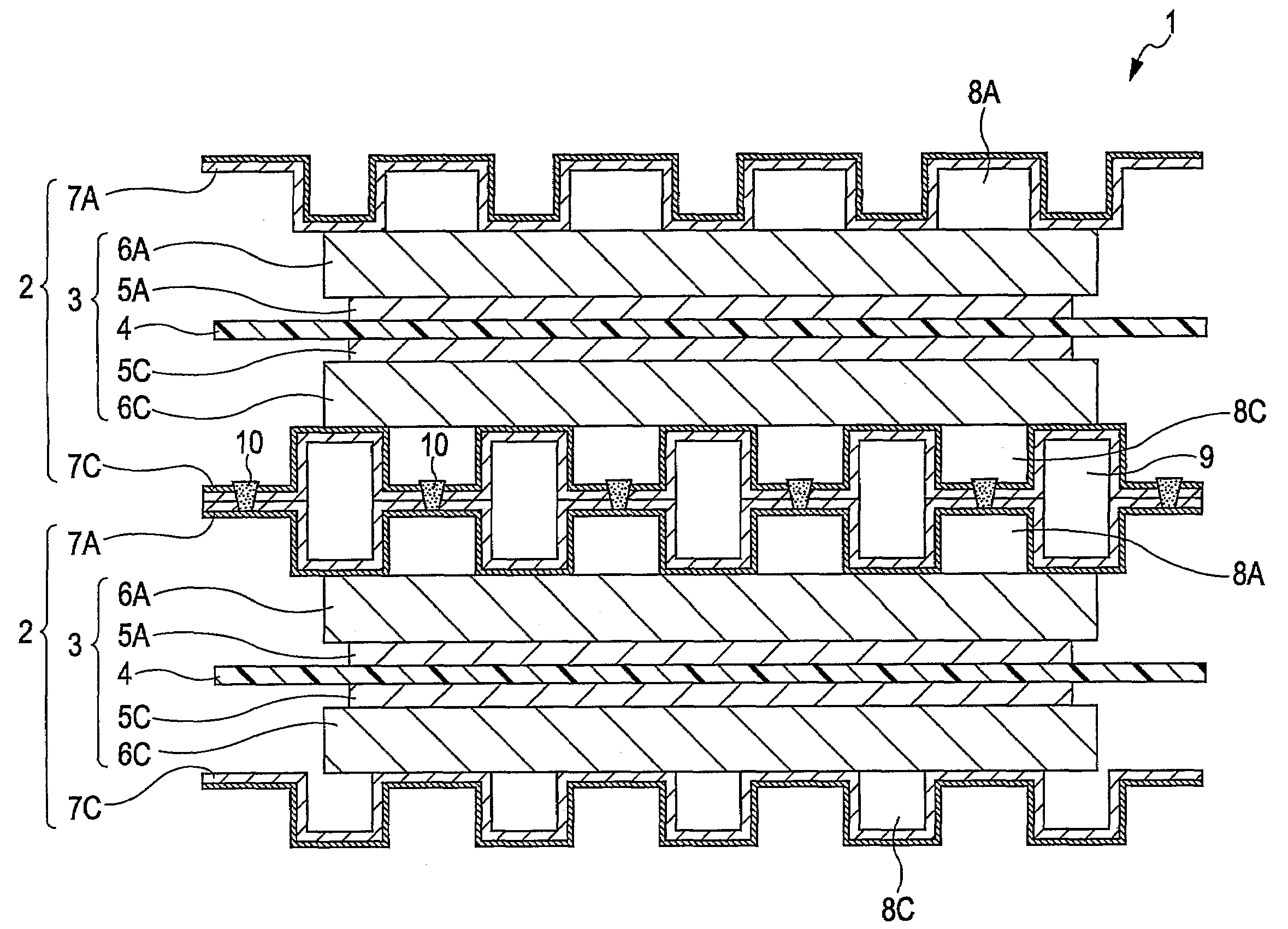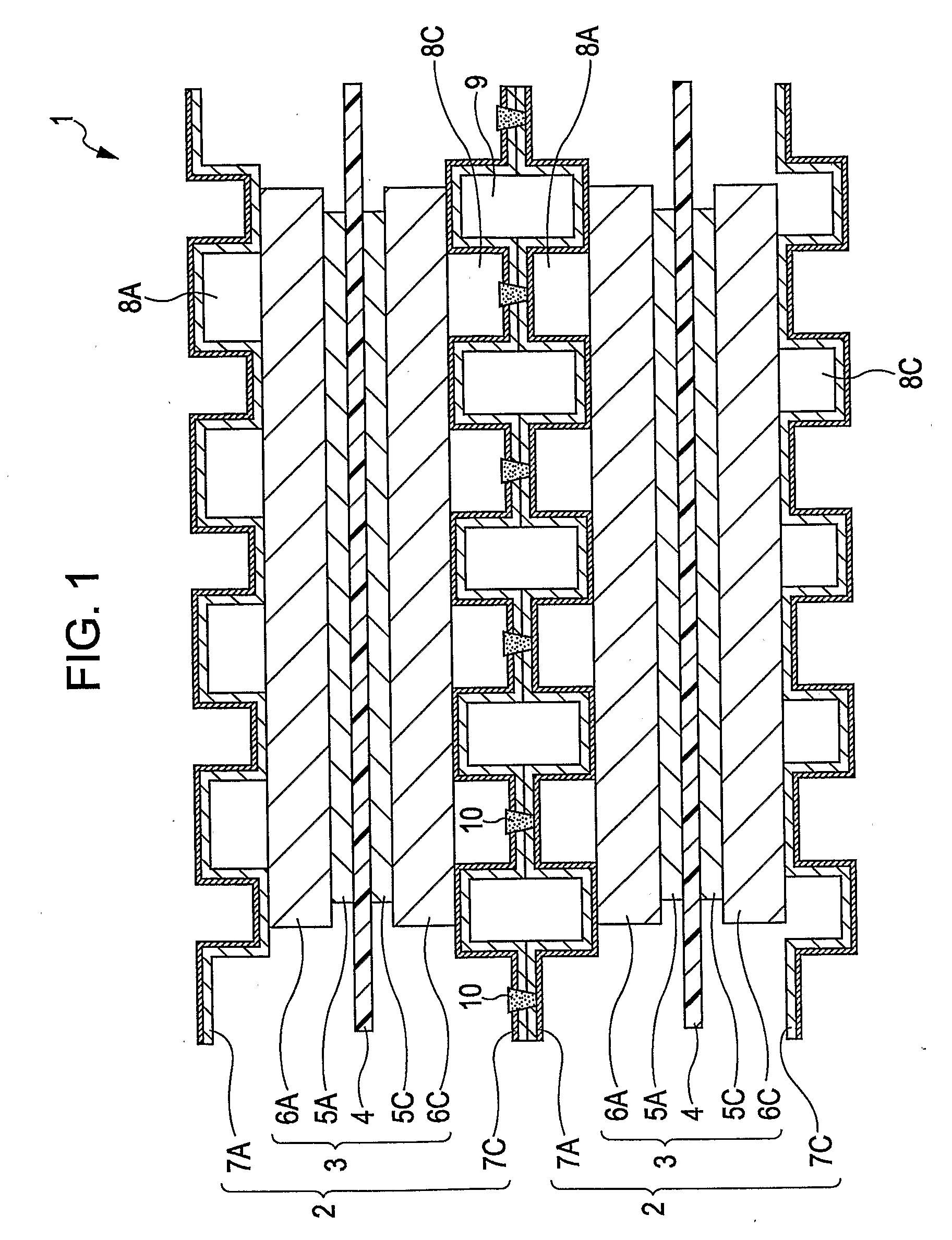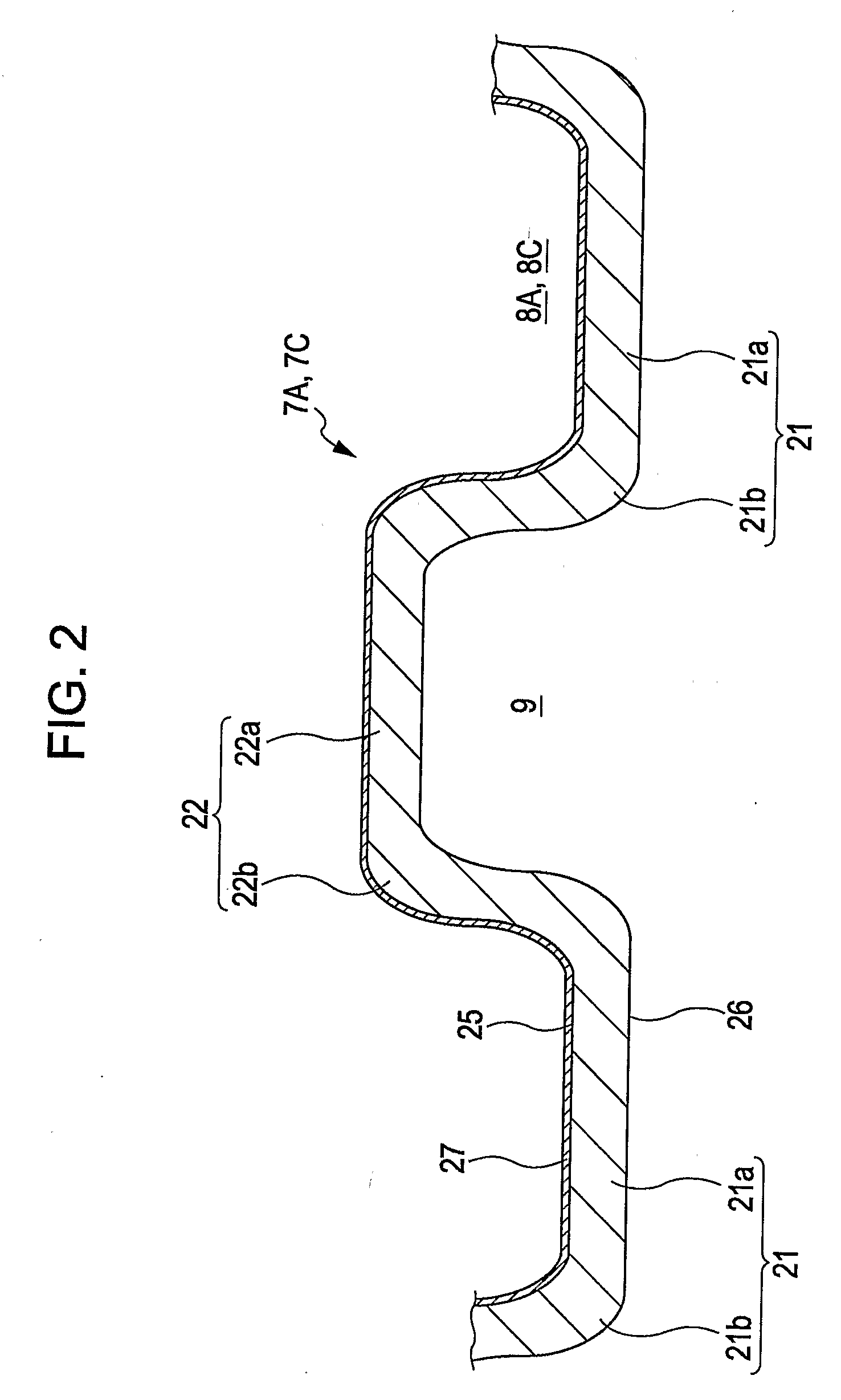Fuel cell stack and method of producing its separator plates
a technology of separator plates and fuel cells, which is applied in the field of fuel cell stacks, can solve the problems of increasing the cost of fuel cells and the use of expensive noble metals, and achieve the effects of satisfying the corrosion resistance of reaction-side surfaces, low contact resistance, and corrosion resistan
- Summary
- Abstract
- Description
- Claims
- Application Information
AI Technical Summary
Benefits of technology
Problems solved by technology
Method used
Image
Examples
example 1
[0076]In Example 1, as shown in FIG. 5, linear welded portions 11 and dot welded portions 12 are provided on a first separator 7A and a second separator 7C in any arrangement in accordance with the dimensions of projecting portions 21 and 22, warping of the separators 7A and 7C after press forming, and the like.
[0077]When flow paths 8A, 8C, and 9 formed by the first separator 7A and the second separator 7C linearly extend, projecting portions 21 are in contact with each other without any clearance. On the other hand, when the flow paths 8A, 8C, and 9 have a serpentine shape, a clearance may be partly formed between the projecting portions 21. Accordingly, the linear welded portions 11 and dot welded portions 12 are appropriately arranged in combinations in accordance with a distribution state of contact portions of the first separator 7A and the second separator 7C.
[0078]When the ratio of a welded area (joined area) corresponding to the welded portion 10 to the contact area of the f...
example 2
[0084]In Example 2, oxide films on the back surface 26 of the first separator 7A and the back surface 26 of the second separator 7C are removed and the back surfaces 26 thereof are then welded.
[0085]In this example, to remove the oxide film, base materials of the first separator 7A and the second separator 7C are immersed in a sulfuric acid-acidic solution, and a predetermined electrical potential is applied to the base materials.
[0086]FIG. 10 shows experimental results of measured penetration resistances of the first separator 7A and the second separator 7C in the case where the surface pressure between the first separator 7A and the second separator 7C was varied. In FIG. 10, characteristic A represents a result in the case where the welding was performed without removing the oxide films on the back surfaces 26, characteristic B represents a result in the case where the oxide films on the back surfaces 26 were removed with an acid and the welding was then performed, and characteri...
example 3
[0090]In Example 3, oxide films on the back surface 26 of the first separator 7A and the back surface 26 of the second separator 7C are removed by machining, i.e., grinding and the back surfaces 26 thereof are then welded.
[0091]The surface roughness of the back surface 26 of the first separator 7A and the back surface 26 of the second separator 7C is controlled to a predetermined surface roughness X-2 (see FIG. 12) at portions surrounded by the temperature-control medium flow path 9 so as to increase conductive properties. On the other hand, at portions facing gaskets (not shown), the surface roughness is controlled to a value smaller than the surface roughness X-2 so as to improve the sealing property.
[0092]FIG. 12 shows experimental results of measured penetration resistances of the first separator 7A and the second separator 7C, which were made of a metal X or a metal Y, in the case where the surface roughness of the back surface 26 of the first separator 7A and the back surface ...
PUM
| Property | Measurement | Unit |
|---|---|---|
| Fraction | aaaaa | aaaaa |
| Temperature | aaaaa | aaaaa |
| Electrical resistance | aaaaa | aaaaa |
Abstract
Description
Claims
Application Information
 Login to View More
Login to View More - R&D
- Intellectual Property
- Life Sciences
- Materials
- Tech Scout
- Unparalleled Data Quality
- Higher Quality Content
- 60% Fewer Hallucinations
Browse by: Latest US Patents, China's latest patents, Technical Efficacy Thesaurus, Application Domain, Technology Topic, Popular Technical Reports.
© 2025 PatSnap. All rights reserved.Legal|Privacy policy|Modern Slavery Act Transparency Statement|Sitemap|About US| Contact US: help@patsnap.com



